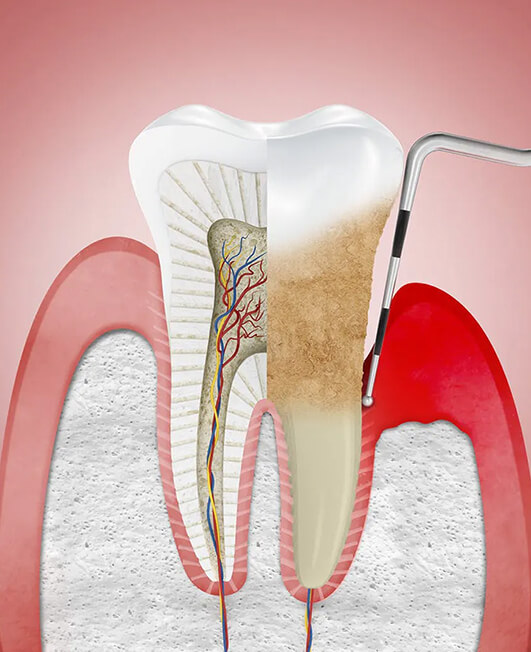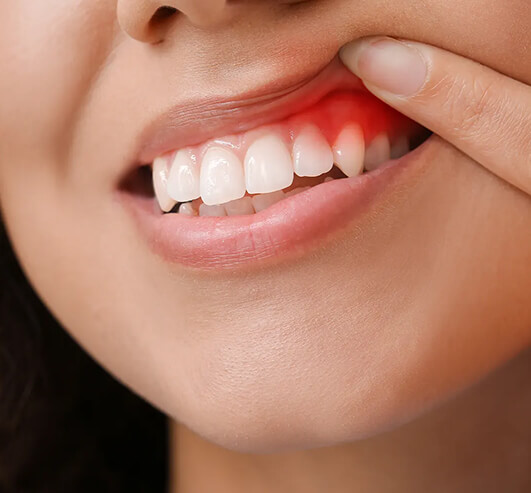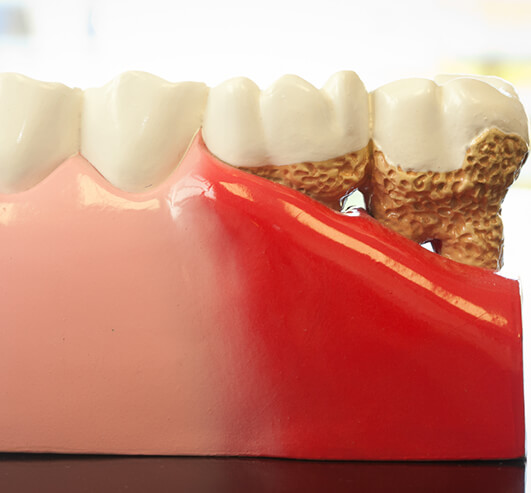The two most common forms of dental disease, caries (tooth decay) and periodontal disease (gum disease) are caused by the presence of bacterial communities in dental plaque, which is a sticky film that is constantly accumulating in the mouth. While in the case of tooth decay the acidic products of the plaque bacteria progressively erode tooth structure, in gum disease an inflammatory response is provoked in the periodontal tissues that surround and support the teeth. If left untreated, periodontal disease can lead to gingival pocket formation, gum recession and diminishing alveolar bone with the eventual loosening and loss of teeth.
According to the Centers for Disease Control and Prevention (CDC), one out of every two adults aged 30 and over in the United States is affected by periodontal disease. Furthermore, that number increases to over 70% for individuals 65 and older. Since gum disease is the main cause of tooth loss in adults and there is an increasing association with systemic diseases such as heart disease, stroke, diabetes, respiratory problems and adverse pregnancy outcomes, periodontal disease represents a serious public health concern.


While gum disease is a progressive condition, if treated early in its onset it can be reversed to restore oral health. At more advanced stages, the disease can be managed to halt its progression and prevent the most severe consequences.
The earliest stage of gum disease is known as gingivitis, which is caused by the buildup of dental plaque at the gumline. Gingivitis is extremely common and is typically associated with bleeding when brushing or flossing. With gingivitis there is no evidence of bone loss or significant periodontal pockets between the teeth and gums. Gingivitis can be successfully treated and reversed with a series of professional dental cleanings and an improved regimen of oral hygiene at home.





